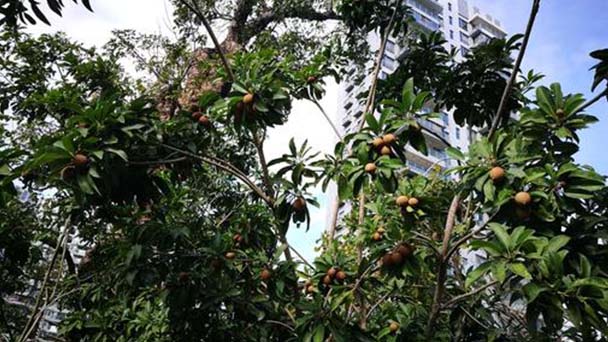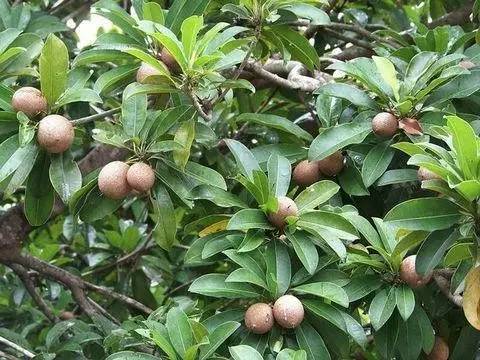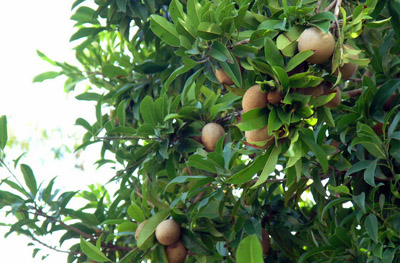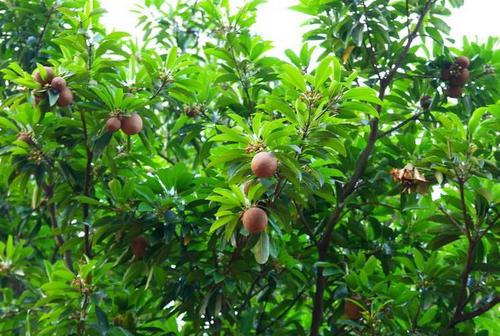How to grow and care for Sapodilla
Written by Maggie
Dec 24 2020

Sapodilla fruit is highly edible and has a high profit margin. Sapodilla planting is not that simple, however, because Sapodilla requires a specific planting environment. Growing conditions also limit the ability to grow in some areas. Today, we’ll introduce how to grow and care for Sapodilla. Let's take a look!

How to grow Sapodilla
1. Select and prepare the land
Gardens choice determines the survival rate of Sapodilla planting. Sapodilla is a very very bright light and warm fruit, so it also determines the choice where climate is relatively stable throughout the year. The second is where it is best to be sunny, and the land will be smooth, no depression, sheltered better and well drained of hills, plains and slopes. Soil preparation has only two requirements, the first is the commune twenty-five centimeters at least, the second soil the fine leveling in time, and is the basal, mainly composed of farm manure.
2. Sowing method
Sapodilla has many kinds of propagation ways, such as seed sowing, grafting, cutting and layering, etc.. The original is the sowing of seeds, and with more a way of sowing, followed by grafting seeding is also very popular now. The first survival rate is high, the second is guaranteed the quality and output, the last is still can shorten the growth period. So the most often used now is combining a way of sowing seeds and grafting, to cultivate good grafting, and Sapodilla seedlings, and then wait for everything to be ready, and it can be grafted.
3. Reasonably close planting
We usually plant in April and May every spring, and at the time of planting we need reasonable density, so as to guarantee the production and quality of Sapodilla. Under normal circumstances, it can be an acre of land planted Sapodilla tree between two hundred and three hundred, during which plant according to the line spacing when one meter to one meter five two meters, spacing between plants is about one meter to one and a half meters, which will ensure that the permeability between the garden.
4. Scientific management
Management is mainly including watering, fertilization, pruning, weeding, flower thinning and clearing the garden. Among them, watering, fertilizing and weeding are combined, that is, it must be done in one step. Basically you only need three doses of fertilizer a year. It is usually done in the form of furrow fertilization. Thinning is done in the bloom stage, and thinning is done after the flower has faded when the fruit is as big as fingers, so as to ensure smooth work. The final gardening work is also very important, because it can prevent and control some diseases, make sufficient preparations for next year's yield, and finally extend the service life of Sapodilla trees, so we should be careful when we garden.
5. Assisted pollination
In order to improve the success rate of Sapodilla fruit-set, artificial supplementary pollination is a vital work. There are two main ways of artificial pollination, the first is the artificial point teaching method, which is time consuming, but the rate is extremely high, which is mainly the pollen pieces of each to daub, more troublesome, planting area still can be considered less. But the large area or use of the second powder spraying method is better, so efficiency is higher, and the success rate is not bad. It is best to choose pollination time from ten o 'clock in the morning to four o 'clock in the afternoon this time to complete.

How to care for Sapodilla
1. The soil
Sapodilla does not have strict requirements on soil and has strong adaptability. In the wild, Sapodilla can grow normally on most soils. But if the artificial cultivation of its yield and fruit quality are certain requirements. Therefore, in order to improve the yield and quality of Sapodilla, it is better to choose soil with sufficient fertility, high permeability and normal drainage and irrigation. This can effectively improve the growth capacity of Sapodilla, promote the flowering and fruiting of Sapodilla, and increase the economic benefits of planting.
2.Water
Sapodilla is an evergreen tree. It has many hair shots every year and has more than two flowering and fruiting periods. It has a large amount of growth and a high yield. Therefore, Sapodilla trees have a great water demand. Sapodilla trees have strong growth and high fruit and fruit ratio. If the water is insufficient, it should be timely watering, do a good job of drought protection and moisture. Lack of water can cause Sapodilla to fall flowers and fruit, seriously affecting the yield. But water should not be too much, and prolonged wet weather can also reduce Sapodilla's output.So we also have to do a good job of drainage.
3.Temperature
Sapodilla is a tropical fruit, so it is suitable to grow in a high temperature environment, and it also restricts the cultivation in most areas of China. Sapodilla saplings are so sensitive to temperature changes that they can suffer when they reach 5 degrees or so, and can cause death if they fall below zero. With the adult tree cold resistance increased, but the temperature at minus 5 degrees, there will be twigs dry, fruit drop and other undesirable phenomenon.Temperature is very important for the growth of Sapodilla. In tropical regions, Sapodilla fruit is high in sugar content, tastes good, and improves its economic benefits.
4. Illumination
Although Sapodilla is a tropical fruit, it has strong shade tolerance, can be mixed with other fruit trees, and can also blossom and bear fruit well. Although the bore branch may dry out, it is not too severe. However, in order to improve the photosynthesis of Sapodilla tree, we increased the nutrient accumulation in the fruit tree. We also need to do prune work properly, cut off useless branches, and control Sapodilla's growth direction. Ensure adequate light, and planting should also pay attention to the planting density, and do a good job of shaping and pruning.

Latest Updated
- Benefits of Bugleweed - 7 Science-backed Health Benefits
- Bugleweed Dangers & Side Effects - Is It Poisonous?
- How to Plant Evergreen Trees - What You Should Know
- When to Plant Evergreens - Grow Guide for Evergreen Trees
- 12 Wonderful Evergreen Shrubs for Your Garden
- 12 Popular Evergreen Plants with Pictures for Beginners
- When And How To Prune A Lilac Bush Like a Pro
- How to Grow & Care for Lilac Vine (Hardenbergia Violacea)
- Japanese Lilac Tree (Syringa Reticulata) Care & Propagation Guide
- Shumard Oak Pros and Cons - What to Know
Popular Articles
- Winter maintenance of Antirrhinum Majus
- How to Grow Terminalia Mantaly Tree
- How to Grow and Care for Crossostephium Chinense
- How to grow Antirrhinum Majus in spring
- Peristeria Elata (Dove Orchid) Profile: Info & Care Guide
- Underwatered Snake Plant (Sansevieria Trifasciata) - Signs And How To Fix
- How to Care for Brazilian Jasmine Plant (Mandevilla Sanderi)
- How to Grow & Care for Graptopetalum Purple Delight in Summer
- Rosa Chinensis (China Rose): Plant Growing & Care Tips
- How to Care for Baby Sun Rose (Aptenia Cordifolia)